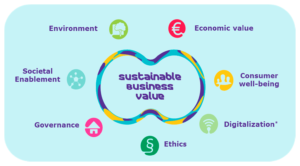A well-crafted business plan serves as the foundation for entrepreneurial success. It outlines a clear roadmap, sets goals, and provides a strategic framework for launching and growing a business.
Executive Summary: Capturing the Essence
The executive summary concisely presents the business concept, mission, target market, and competitive advantage. It provides a snapshot of the entire business plan and should be compelling enough to capture the reader’s interest.
Market Analysis: Understanding the Landscape
Thorough market research is essential to understand industry trends, customer needs, and potential competitors. This section outlines the market size, target demographics, and identifies gaps that the business aims to fill.
Company Description: Defining Your Identity
This section elaborates on the business’s mission, vision, values, and goals. It outlines the company’s unique value proposition and highlights what sets it apart from the competition.
Products and Services: Showcasing Value
Describe the products or services the business offers, emphasizing their features, benefits, and how they meet customer needs. Highlight any intellectual property, patents, or proprietary technology.
Marketing and Sales Strategy: Reaching Customers
Outline the marketing tactics and strategies the business will employ to reach its target audience. This includes branding, advertising, social media, and sales channels.
Organization and Management: Building a Strong Team
Introduce key team members, their roles, and their qualifications. Investors are interested in the expertise and experience of the team leading the business.
Funding and Financial Projections: Demonstrating Viability
Detail the funding requirements of the business and how the funds will be allocated. Provide financial projections, including income statements, cash flow projections, and a break-even analysis.
Implementation and Timeline: Executing the Plan
This section outlines the actionable steps to bring the business to life. It includes a timeline with milestones, responsibilities, and deadlines.
Risk Assessment and Mitigation: Identifying Challenges
Discuss potential risks and challenges the business might face, and present strategies to mitigate these risks.
Appendices: Supporting Information
Include any additional information that supports the claims made in the business plan, such as market research data, resumes of key team members, and legal documents.
In conclusion, a well-crafted business plan is more than a document; it’s a strategic tool that guides an entrepreneur’s journey toward success. By providing a clear roadmap and outlining the business’s value proposition, it instills confidence in investors, partners, and stakeholders.



























+ There are no comments
Add yours